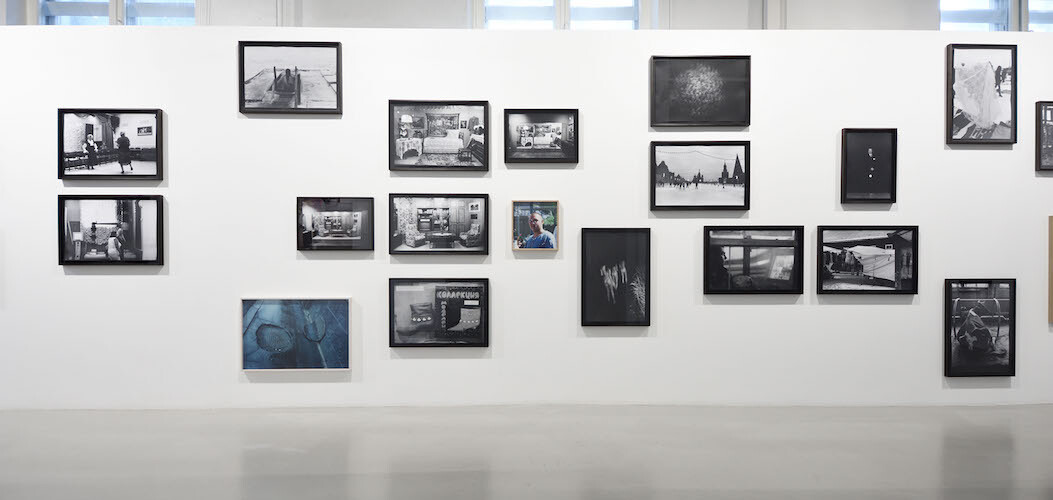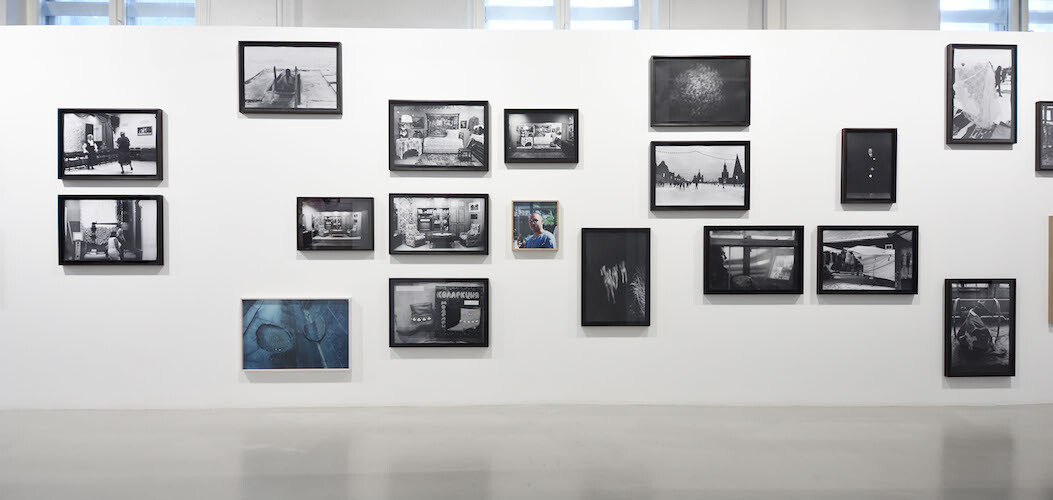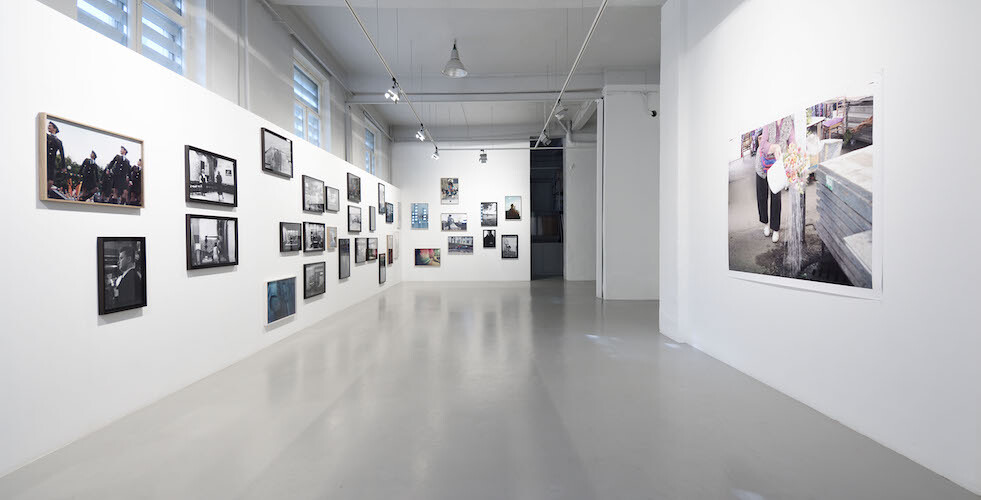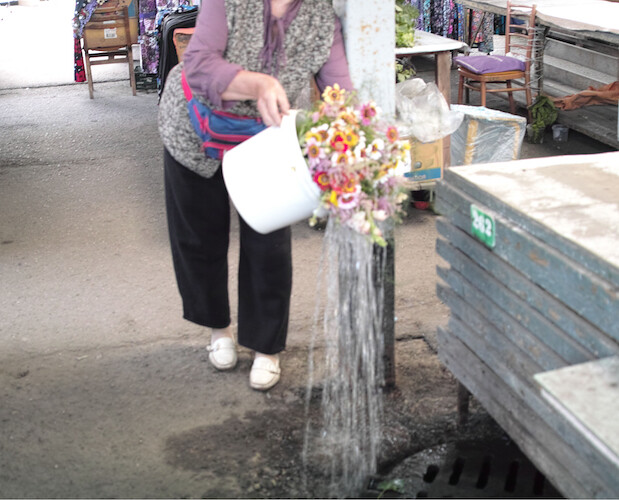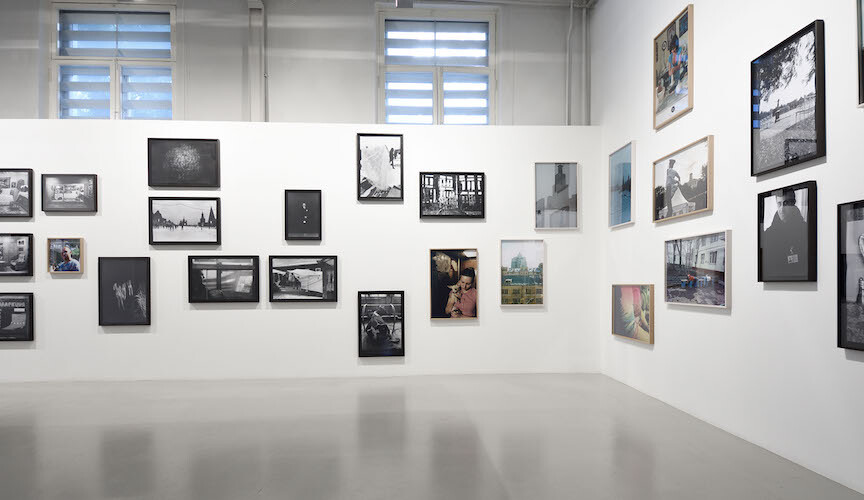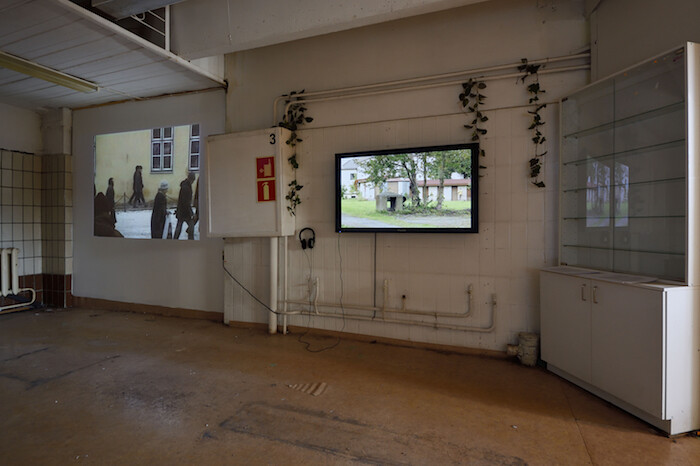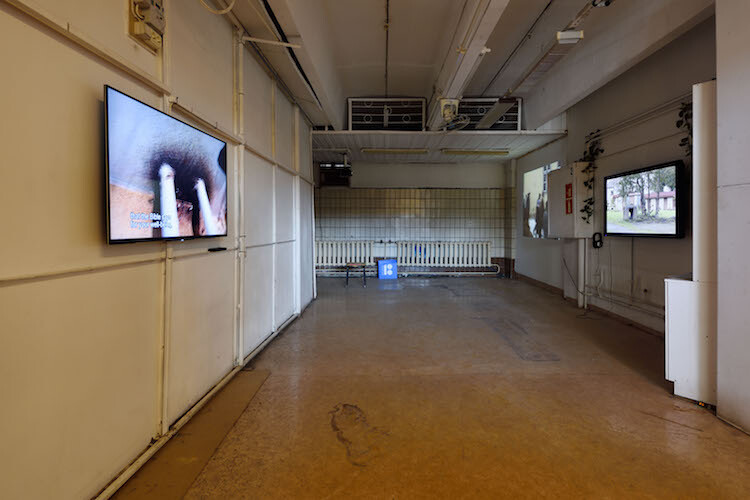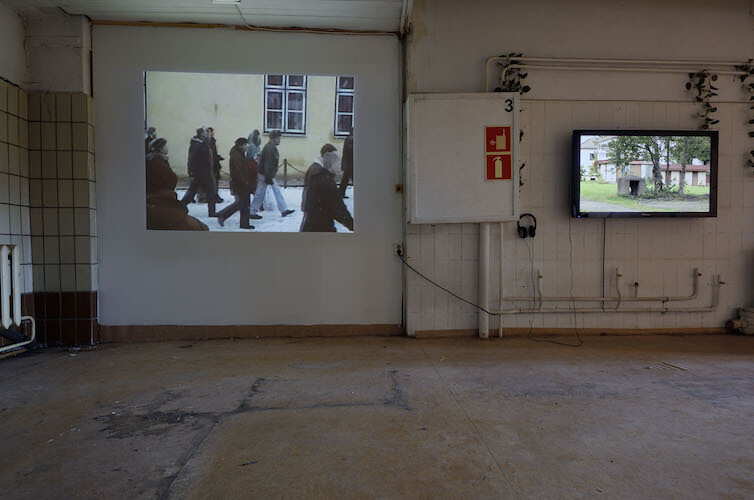Ever since the end of the Cold War, an aesthetics of mourning has characterized contemporary art’s understanding of its own critical history. “Burdened with a sadness it cannot dispel,” several generations have been delving into these “realms of defeated utopia,” looking back rather than forward.1 At Temnikova & Kasela, Tallinn, Anders Kreuger curates two simultaneous exhibitions, thematizing Tallinn’s soon-to-be-bulldozed Central Market: one at the gallery and the other inside the old market building, marked for demolition.
It is difficult not to feel sentimental about the photographs by Russian artist Olga Chernysheva, one of which, Before Closing (2017) depicts the city’s once-thriving Central Market. Grouped under the equally sentimental title Algunas Canciones Lindas [Some Beautiful Songs] (2002), which the artist borrowed from an old LP featuring Cuban folk songs, the alternating black-and-white and color plates depict a resting cow, two elderly ladies dancing, a young woman holding her pet dog, a manhole, a florist disposing of stale water into a drain, several Soviet-era buildings, a boy holding a piece of see-through fabric with floral motifs, and a young man surrounded by soap bubbles. Though most images were shot recently they do not feel contemporary; Chernysheva’s “eye seems to seek out those persistent remnants of the twentieth century that have become encoded with a sort of timelessness”2 or a sort of Sovietness, if you will. The central piece of the exhibition—two untitled black-and-white prints (2011)—display twin pictures of the same room, decorated in Eastern Bloc style. But while one appears to be a straightforward photograph of a living room, the other is shot with a wider angle, revealing a frame-like set, suggesting theater scenery or the fictionalization of Ostalgie.
Sentimentality, Lauren Berlant argues, is not just “the mawkish, nostalgic, and simpleminded mode with which it’s conventionally associated, where people identify with wounds of saturated longing and suffering, and it’s not just a synonym for a theatre of empathy: it is a mode of relationality in which people take emotions to express something authentic about themselves that they think the world should welcome and respect; a mode constituted by affective and emotional intelligibility and a kind of generosity, recognition, and solidarity among strangers.”3 Sentimentality could perhaps be construed as a methodology for working through the overdetermination of the past, as an object of affect and emotional investment, and as a form of mourning for the utopias that never came to pass.
Jaan Toomik’s “Kuidas lääs oli vasak” [How the West Was Left], installed inside Tallinn’s Central Market, comprises several videos whose tone is more pungent. Jaanika (2007) a short video, which the artist describes as a documentary, shows a roach-infested apartment, in which several generations of critters dwell. While a female voice—Jaanika, a young waitress—recounts her longing to be socially useful to the local congregation, the camera zooms in on the meandering insects. They crawl up the wall-mounted toilet in such great numbers that most scramble atop one another, or roam in a scurrying mass among books, empty food cans, and assorted toiletries. It is hard not to think of Gregor Samsa, worn out by his life-building obligations, and resenting his family in secret. Wanting to be nurtured instead, he becomes a parasite: yearning made flesh, or rather antennae and exoskeleton. Jaanika also gets punished for rebelling against her father’s advice, though not so harshly: she drops her keys in a garbage bin by accident. Tellingly, the family disagreement is about books Jaanika would like to dispose of, and which her father advises her to keep: you depart from the symbolic at your own peril.
Socializing pain is no easy task, whether collectively or individually—and Gregor-the-roach dies trying. Jaanika finds some relief in helping convicts, whose incarceration acts as a Freudian inversion of the autonomy she is burdened with, but her anxiety is not merely personal. At times when aspirations for upward mobility, job security, or social parity are fraying, and the very notion of what it means to “have a life” is crumbling at a threatening pace, could a whole country transmogrify?4 Toomik’s title, “How the West Was Left,” points to a vanishing horizon: both the West and the East ended in 1989. There is no other world beyond this one, not spatially, at least. The hoarder’s apartment becomes a cipher for the market economy, liberty, and exchange value. If to be free and sovereign one needs to be independent, property-wise, every piece of hoarded junk heralds autonomy. Like Gregor Samsa the hoarder takes everything literally, confounding self-sustenance with self-extension. But Toomik’s gaze is neither cruel or unkind nor warped in defeatist introspection. The spurts and swell of his roach world “make tangible an unease that festers under the surface of a society bent on normalizing.”5 Bells (1997), another short video in the show, portrays the congregation leaving the church while the church bells ring. The video reminds me of Exiting the Factory (1895), the first publicly shown motion picture, made by Louis Lumière. Like the Lumière workforce, the people leaving the church seem linked by an invisible force, a group, as opposed to lone individuals. But whereas the Lumière film makes visible the process of production, Toomik records the (invisible) work of social reproduction, or how to make a world rather than just a living. The twentieth century could be bracketed by these two films.
Peter E. Gordon, “Mourning in America,” Boston Review (July 18, 2017).
Travis Jeppesen, “Olga Chernysheva,” Artforum (September 2017): https://www.artforum.com/picks/id=71042.
Earl McCabe, “Depressive Realism: An Interview with Lauren Berlant,” The Hypocrite Reader no. 5 (June 2011).
Lauren Berlant, Cruel Optimism (Durham: Duke University Press, 2011), 5.
Anders Kreuger, “Jaan Toomik “How the West Was Left” August 24–30, 2017” (press release): http://temnikova.ee/?c=exhibitions&l=en&t=jaan-toomik-how-the-west-was-left-august-2430-2017&id=190.
